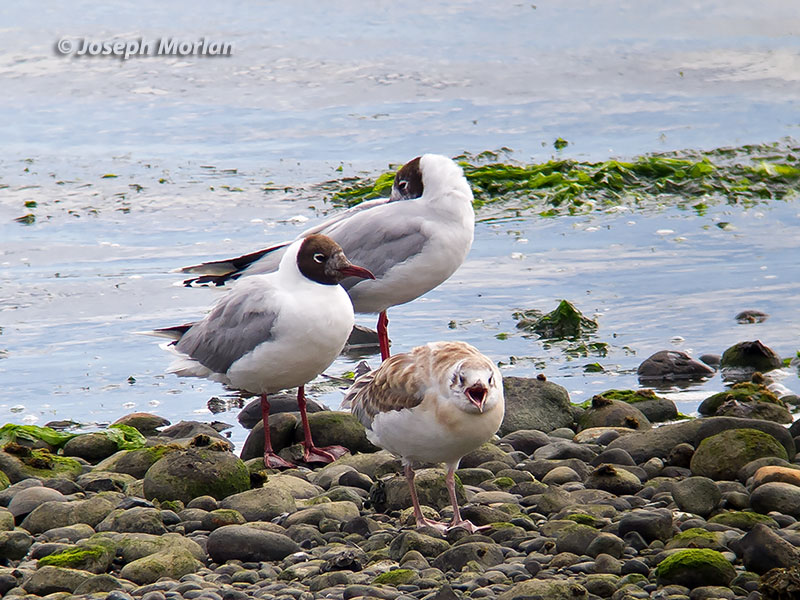


The top bird is a breeding plumage (alternate) adult showing extensive white wing-tips. The wispy pale gray area around its bill is the first sign of molting into non-breeding (basic) plumage. These gulls range along the coasts of Southern South America but they bear a strong resemblance to the Black-headed Gull (Chroicocephalus ridibundus) of the Western Palearctic. In fact, the two were considered conspecific by Hellmayr. Brown-hooded has a slightly darker mantle, narrower dark subterminal band on its primaries and more dark at the bases of its outermost primaries cf. Black-headed.
There were also numerous juveniles on our visit (middle and bottom). The distinct white primary tips and large mirror on the underside of p10 are features of L. m glaucodes according to Howell & Dunn, but see below. This wing-tip pattern also helps distinguish juveniles from Black-headed Gull (Chroicocephalus ridibundus) which has less obvious white primary tips. The narrower dark tail band of Brown-hooded is another supposed feature but the difference is not evident to me in this photo.
Most authorities including Clements, IOC, HBW and Howard & Moore consider this species monotypic, but Howell & Dunn "Gulls of the Americas" classify birds from northern Argentina to southern Brazil as the nominate race while C. m. glaucodes with more white in its wing-tips is found throughout the rest of the bird's range. Under this classification, these birds are C. m. glaucodes. In 2007 the SACC moved this species along with other small hooded gulls from Larus into the genus Chroicocephalus in an effort to keep Larus monophyletic. This classification has been adopted by most authors with the notable exception of HBW and Birdlife International.
Digiscoped with Panasonic DMC-LX5 | Nikon FieldScope 3 | 30X WA | hand-held (no adapter)